10 Insurtechs for Dramatic Cost Savings
Merely adding a digital channel or an app doesn't work. This only adds cost and increases complexity in the IT landscape,

Merely adding a digital channel or an app doesn't work. This only adds cost and increases complexity in the IT landscape,

Get Involved
Our authors are what set Insurance Thought Leadership apart.
|
Partner with us
We’d love to talk to you about how we can improve your marketing ROI.
|
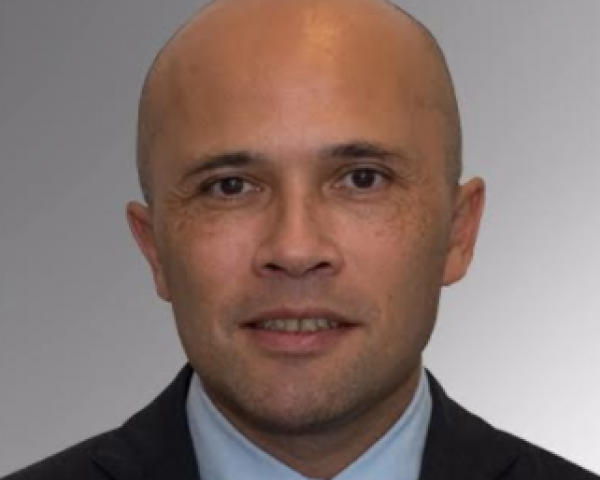
Roger Peverelli is an author, speaker and consultant in digital customer engagement strategies and innovation, and how to work with fintechs and insurtechs for that purpose. He is a partner at consultancy firm VODW.

Reggy de Feniks is an expert on digital customer engagement strategies and renowned consultant, speaker and author. Feniks co-wrote the worldwide bestseller “Reinventing Financial Services: What Consumers Expect From Future Banks and Insurers.”
Many insurers still struggle to even provide real omnichannel customer service, or offer timely and transparent claims settlement.

Many insurers are focused on how to innovate, but most do not have a stable, cost-efficient core to support and fund their innovation efforts. Both are necessary.
We’ve all read the productivity articles about the world leader who eats the same thing for breakfast, repeats the same 40-minute workout and reads the newspaper in the exact same order. We’ve heard about elite athletes with rigid pre-game routines, down to the music they’ll listen to before the match. The take-home message from this is that you need a stable foundation if you’re going to do amazing things. And in the case of insurers, a stable, efficient core is essential to enabling innovation. A stable core is essential for innovation It’s easy to focus on the shiny, emerging technologies that promise to up-end the insurance industry: artificial intelligence (AI), the Internet of Things (IoT) and blockchain, to name a few. Do these things have far-reaching implications for insurance? Yes. Are there startups leveraging new technologies that may eventually disrupt the industry? Of course. But when many insurers still struggle to provide real omnichannel customer service, or offer timely and transparent claims settlement, it’s almost irresponsible to be asking which company or technology will disrupt insurance.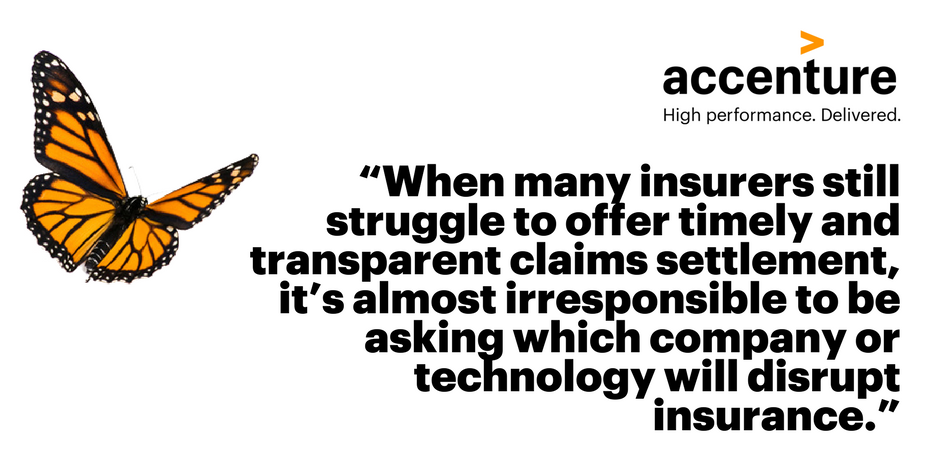 Part of the issue is that the industry tends to clump two distinct opportunities together. First, there are the core competencies that insurers must master: the user experience, personalized offers, timely and transparent claims service. Get these pieces right, and you may not win—but do them poorly, and you will inevitably lose. Separate from this are the new technologies that capture headlines; if scaled successfully, these cool innovations can pave the way to an insurer’s future revenue streams.
Brilliant basics and cutting new ground
At Accenture, we call these two opportunities the Brilliant Basics and Cutting New Ground. By getting the Brilliant Basics right, insurers foster a stable core—the strong foundation that’s necessary to enable innovation, in the form of Cutting New Ground.
By injecting new digital technologies to transform the core, it becomes cheaper and more efficient to do the Brilliant Basics. This approach is aligned with what’s recommended by the Accenture Disruptability Index, which identified insurance as being vulnerable to disruption and recommended optimizing to improve structural productivity.
See also: Core Transformation – Start Your Engines!
Successful core transformation can create efficiencies, reduce the cost to serve and improve growth—all of which frees investment capital to fund Cutting New Ground initiatives. These innovation initiatives should be viewed like a portfolio of digital investments. Low-risk, low-reward projects may be more likely to succeed and deliver incremental growth. High-risk, high-reward projects may be less likely to succeed—but if they do, they can enable an insurer to establish a definitive competitive advantage. Given insurance’s risk aversion, it’s definitely a cultural shift to embark on a project knowing it may not succeed, so viewing Cutting New Ground as a portfolio of investments can be one way to mitigate cultural concerns.
Part of the issue is that the industry tends to clump two distinct opportunities together. First, there are the core competencies that insurers must master: the user experience, personalized offers, timely and transparent claims service. Get these pieces right, and you may not win—but do them poorly, and you will inevitably lose. Separate from this are the new technologies that capture headlines; if scaled successfully, these cool innovations can pave the way to an insurer’s future revenue streams.
Brilliant basics and cutting new ground
At Accenture, we call these two opportunities the Brilliant Basics and Cutting New Ground. By getting the Brilliant Basics right, insurers foster a stable core—the strong foundation that’s necessary to enable innovation, in the form of Cutting New Ground.
By injecting new digital technologies to transform the core, it becomes cheaper and more efficient to do the Brilliant Basics. This approach is aligned with what’s recommended by the Accenture Disruptability Index, which identified insurance as being vulnerable to disruption and recommended optimizing to improve structural productivity.
See also: Core Transformation – Start Your Engines!
Successful core transformation can create efficiencies, reduce the cost to serve and improve growth—all of which frees investment capital to fund Cutting New Ground initiatives. These innovation initiatives should be viewed like a portfolio of digital investments. Low-risk, low-reward projects may be more likely to succeed and deliver incremental growth. High-risk, high-reward projects may be less likely to succeed—but if they do, they can enable an insurer to establish a definitive competitive advantage. Given insurance’s risk aversion, it’s definitely a cultural shift to embark on a project knowing it may not succeed, so viewing Cutting New Ground as a portfolio of investments can be one way to mitigate cultural concerns.
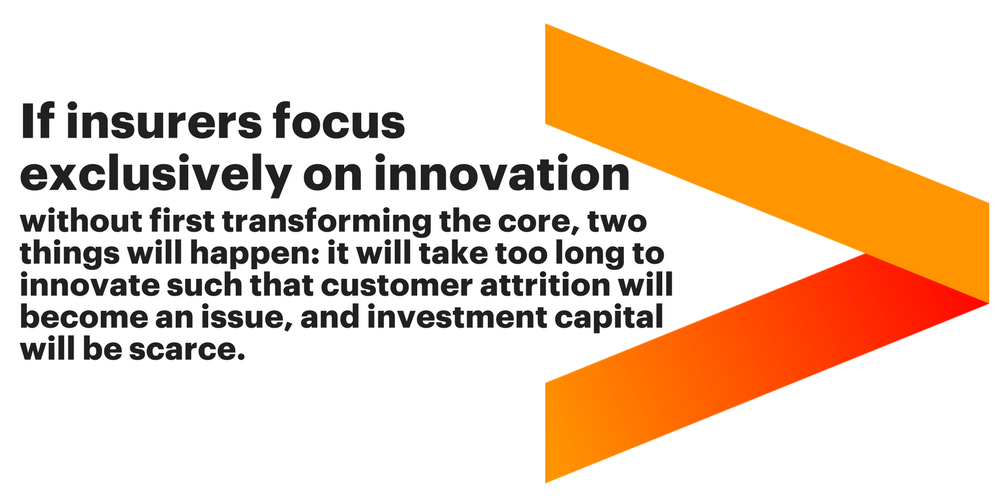 Consequently, insurers need both pieces. Brilliant Basics can enable a stable core and generate investment capital that make it possible for insurers to focus on Cutting New Ground. Brilliant Basics is the elite athlete’s pre-game routine; Cutting New Ground is the game-winning performance, and maybe a record-breaking one at that.
To get started, insurers should consider the following questions:
Consequently, insurers need both pieces. Brilliant Basics can enable a stable core and generate investment capital that make it possible for insurers to focus on Cutting New Ground. Brilliant Basics is the elite athlete’s pre-game routine; Cutting New Ground is the game-winning performance, and maybe a record-breaking one at that.
To get started, insurers should consider the following questions:
Get Involved
Our authors are what set Insurance Thought Leadership apart.
|
Partner with us
We’d love to talk to you about how we can improve your marketing ROI.
|

Michael Costonis is Accenture’s global insurance lead. He manages the insurance practice across P&C and life, helping clients chart a course through digital disruption and capitalize on the opportunities of a rapidly changing marketplace.
What is the best way to get injured workers rapidly back on track? Five levers are key to solving the problem.

 Here are five key levers that can be used to push on cycle time:
Here are five key levers that can be used to push on cycle time:
Get Involved
Our authors are what set Insurance Thought Leadership apart.
|
Partner with us
We’d love to talk to you about how we can improve your marketing ROI.
|

Laura B. Gardner is chief scientist and vice president, products, CLARA analytics. She is an expert in analyzing U.S. health and workers’ compensation data with a focus on predictive modeling, outcomes assessment, design of triage and provider evaluation software applications, program evaluation and health policy research.
Insurers must consider how to incorporate digital transformation, insurtech, emerging technologies and others into their strategies.

Senior executives at insurance companies, like their peers in other industries, are charged with developing and executing the right set of strategies that will lead to success. In years past, strategists at insurance companies have had at their disposal a relatively standard array of strategies to chose from, their job being to prioritize and balance the investments and resources devoted to each. Do we expand our distribution channel network? Put more focus on new products and services? Modernize our foundational policy, billing and claim systems?
These questions and others were the traditional types of questions that executives had to address. Those traditional areas are still important and must be part of the mix for modern insurer strategies. However, a new class of strategic initiatives has emerged that is growing in importance. Now, insurers must consider how to incorporate digital transformation, insurtech, emerging technologies and others into their business and technology strategies.
These “New World” initiatives are poised to reshape the insurance industry, and it is essential that every insurer build them into their plans. A sizable challenge ensues – combining the traditional strategic initiatives with these new world initiatives into just the right blend to make each company successful, today and in the future. This is the new balancing act that executives must tackle – and some may feel like they are teetering on a high wire.
SMA has been tracking the evolution of insurers' strategic initiatives for many years. The changes in these initiatives paint a picture of an industry in transformation and are highlighted in a new SMA e-book, "Strategic Initiatives in Insurance, 2018 and Beyond." The e-book covers the different paths that property/casualty and life/annuity insurers are taking and identifies how companies are prioritizing 12 strategic initiatives (five traditional, six new world and innovation, which spans the old and new).
Several interesting phenomena are occurring. For one thing, more and more executives consider their companies to be in transformation mode, actively trying to redesign and reshape the company for higher growth in the digital age. In addition, both innovation and digital have swept over the industry like a tsunami. About 90% of insurers have significant initiatives for digital transformation and corporate-wide innovation. CEOs feature their digital strategies and investments in their letters to shareholders and earnings calls with Wall Street financial analysts. Chief digital officers are a hot commodity in the industry. Regarding innovation, more insurers are trying to move beyond the early stages to create a broad-based culture of innovation that is sustainable and organic.
One other interesting development is the clear recognition that core systems must be modern to support the demands of a digital, connected world. Modern policy, billing and claim systems are the essential enablers that allow insurers to capitalize on the opportunities for new products, new channel partners, new business models and significant operational improvements.
See also: Strategies to Combat Barriers to InsurtechFinally, it is fascinating to observe the industry as it engages with insurtech and emerging technologies. Not that long ago, technologies like mobile and analytics were considered “emerging.” Now they are table stakes and supportive of a new class of technologies like artificial intelligence, drones, the Internet of Things and many more. The insurtech movement has exploded onto the scene, with well over a thousand startups relevant to the industry. The industry is increasingly engaging with insurtechs and exploring emerging tech, with each company prioritizing based on their lines of business and business models. This year – 2018 – is likely to be an exciting one for the industry as the transformation continues. Stay tuned for interesting developments as insurers execute on their strategic initiatives.
Click here for more information on SMA’s recent e-book, Strategic Initiatives in Insurance, 2018 and Beyond.
Get Involved
Our authors are what set Insurance Thought Leadership apart.
|
Partner with us
We’d love to talk to you about how we can improve your marketing ROI.
|

Mark Breading is a partner at Strategy Meets Action, a Resource Pro company that helps insurers develop and validate their IT strategies and plans, better understand how their investments measure up in today's highly competitive environment and gain clarity on solution options and vendor selection.
Most so-called innovation in healthcare is the equivalent of trying to optimize oil lamp technology to get better lighting in homes and cities.

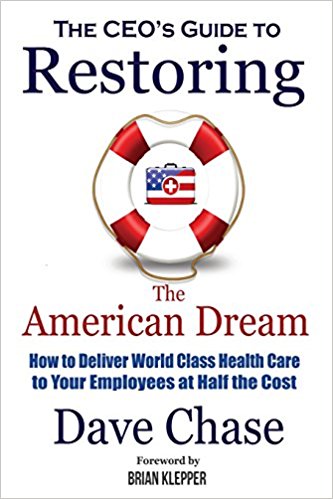 Note: I reference my book, which can be found on Amazon or downloaded for free.
See also: Open Letter to Bezos, Buffett and Dimon
10 reasons past efforts have led to failure:
Note: I reference my book, which can be found on Amazon or downloaded for free.
See also: Open Letter to Bezos, Buffett and Dimon
10 reasons past efforts have led to failure:
"Your margin is my opportunity.” - Jeff Bezos
Get Involved
Our authors are what set Insurance Thought Leadership apart.
|
Partner with us
We’d love to talk to you about how we can improve your marketing ROI.
|

Dave has a unique blend of HealthIT and consumer Internet leadership experience that is well suited to the bridging the gap between Health IT systems and individuals receiving care. Besides his role as CEO of Avado, he is a regular contributor to Reuters, TechCrunch, Forbes, Huffington Post, Washington Post, KevinMD and others.
As progress in the field accelerates at an exponential rate, 2018 should see an avalanche of breakthroughs toward “quantum supremacy.”

Get Involved
Our authors are what set Insurance Thought Leadership apart.
|
Partner with us
We’d love to talk to you about how we can improve your marketing ROI.
|

Vivek Wadhwa is a fellow at Arthur and Toni Rembe Rock Center for Corporate Governance, Stanford University; director of research at the Center for Entrepreneurship and Research Commercialization at the Pratt School of Engineering, Duke University; and distinguished fellow at Singularity University.
Many projects fail to fully realize their potential benefits due to three oversights.

Get Involved
Our authors are what set Insurance Thought Leadership apart.
|
Partner with us
We’d love to talk to you about how we can improve your marketing ROI.
|

Scott Busse is a director at PwC Advisory in the insurance practice. He has over 13 years of consulting experience helping clients undergo change and realize value through the strategic use of technology and information.
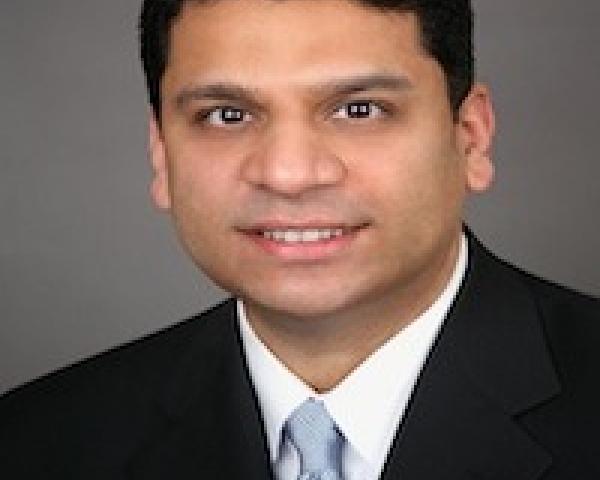
Imran Ilyas is a partner with PwC’s insurance practice, combining 20 years of industry and management consulting experience, primarily in the P&C insurance industry for global, national and regional carriers. He co-leads PwC's policy admin practice.
There must be a bridge, a forceful individual who can drive the agenda of the new team/tool into the host company and vice versa.

Get Involved
Our authors are what set Insurance Thought Leadership apart.
|
Partner with us
We’d love to talk to you about how we can improve your marketing ROI.
|

Alexander Cherry leads the research behind Insurance Nexus’ new business ventures, encompassing summits, surveys and industry reports. He is particularly focused on new markets and topics and strives to render market information into a digestible format that bridges the gap between quantitative and qualitative.Alexander Cherry is Head of Content at Buzzmove, a UK-based Insurtech on a mission to take the hassle and inconvenience out of moving home and contents insurance. Before entering the Insurtech sector, Cherry was head of research at Insurance Nexus, supporting a portfolio of insurance events in Europe, North America and East Asia through in-depth industry analysis, trend reports and podcasts.
Business models of the past 50 years have been based on products, processes and channels for the Silent and Baby Boomer generations.

Get Involved
Our authors are what set Insurance Thought Leadership apart.
|
Partner with us
We’d love to talk to you about how we can improve your marketing ROI.
|

Denise Garth is senior vice president, strategic marketing, responsible for leading marketing, industry relations and innovation in support of Majesco's client-centric strategy.
Last week's announcement of a healthcare venture by Amazon, Berkshire Hathaway and JPMorgan Chase may finally shift the debate in the U.S.

Last week's announcement of a healthcare venture by Amazon, Berkshire Hathaway and JPMorgan Chase may finally shift the debate in the U.S. in what I firmly believe is the right direction.
The debates on the Affordable Care Act and then on "repeal and replace" have largely focused on who pays for care. The real issue is the incredibly high cost of care in the U.S. If we can start to fix that problem, then the issue of who pays becomes easier. If we don't, the issue of who pays will keep getting hairier. And the venture could take a whack at healthcare costs, first for the three companies' employees, then for the whole market.
In theory, health insurers use their size and market power to keep prices down. In fact, health insurers have basically become a tax on the system. Whatever healthcare costs are, insurers get their 20%. Yes, insurers have incentives to push back on individual claims—many of us have learned the hard way—but the higher that costs are in the aggregate, the more the insurers earn. Netting 20% of $1 trillion a year is great, but why stop there if you can collect 20% of nearly $4 trillion? (Healthcare spending was $3.3 trillion in the U.S. in 2016, or 18% of GDP, and is still increasing rapidly. That percentage is roughly twice as high as in other major Western countries, even though Americans consume about as much medicine and services and have relatively low life expectancy.)
Pharmacy benefit managers (PBMs) were, likewise, supposed to protect us on prices, but they've been co-opted, too, by the immense profits to be had. Rather than just negotiate drug prices on behalf of employers and health plans, the PBMs now take payments from all comers, including drug makers—and the U.S. pays prices roughly twice those in other major countries.
Other ideas have been floated, notably "consumerization"—making consumers more accountable for their care by assigning them responsibility for some portion of every payment, while giving them far more information than they have now about prices and the quality of caregivers and value of medicines and procedures. That approach makes some sense, but it requires changing the whole system—and the system will fight back. Patients' cost are the system's revenue, and it has become so large and powerful that it will battle as hard as can be to protect that revenue.
The best idea I've seen, the one that could actually be the point of the spear that pierces the healthcare system's armor, sounds rather like the Amazon/Berkshire Hathaway/JPMorgan Chase deal (which some are calling ABC, after Amazon, Berkshire and Chase).
The notion is that employers—initially, big employers—can lead the way on a form of consumerization because they have both the right incentives and the right scale. Individual consumers carry no particular weight, and we can hardly be expected to sort out the mind-boggling complexity that is healthcare. But big employers that self-insure can hire expertise to negotiate directly with providers and get better prices than if the employers rely on health insurers and pay the middlemen their 20%. Big employers can also draw on their data analytics expertise to measure outcomes and locate the best treatment for employees through programs such as Centers of Excellence. Prices may well be higher for these highest-quality providers, but the centers avoid unnecessary treatment (not something that a revenue-maximizing system is especially good at policing) while providing care that is more likely to be right the first time; that both avoids cost and reduces complications for patients. Employers can also cut through the fog that cloaks drug charges and insist on better prices either from PBMs or directly from makers.
Essentially, big employers kick insurers out of the picture and go toe to toe with healthcare providers and PBMs to both lower prices and improve care. That's the theory, anyway.
The details about ABC, while still sketchy, suggest it is the best example thus far of this approach. If ABC works, and other examples follow, they might just provide a market-based solution to a major drag on Americans. Individuals would initially be left out, but some way could eventually be found to let them benefit from the prices negotiated by corporations or Medicare.
There are, of course, plenty of reasons to be skeptical. If you'll allow me, ABC isn't as simple as A, B, C. Even if the deal works as advertised, what's to stop the combined companies from becoming just another power that jacks up healthcare prices for individuals while working for their own benefit? Amazon's Jeff Bezos, Berkshire Hathaway's Warren Buffett and Chase's Jamie Dimon aren't exactly known for turning down profits.
Still, for now, let's call ABC progress and keep a close eye on where it goes. That's pretty much the initial take among our thoughts leaders, three of whose articles on the subject I've included below. (One, Brian Klepper, has organized an impressive array of thinkers on a listserv on healthcare costs that has done much to shape my thinking.)
I'll keep my fingers crossed. If this approach doesn't work....
Have a great week.
Paul Carroll
Editor-in-Chief
Get Involved
Our authors are what set Insurance Thought Leadership apart.
|
Partner with us
We’d love to talk to you about how we can improve your marketing ROI.
|

Paul Carroll is the editor-in-chief of Insurance Thought Leadership.
He is also co-author of A Brief History of a Perfect Future: Inventing the Future We Can Proudly Leave Our Kids by 2050 and Billion Dollar Lessons: What You Can Learn From the Most Inexcusable Business Failures of the Last 25 Years and the author of a best-seller on IBM, published in 1993.
Carroll spent 17 years at the Wall Street Journal as an editor and reporter; he was nominated twice for the Pulitzer Prize. He later was a finalist for a National Magazine Award.